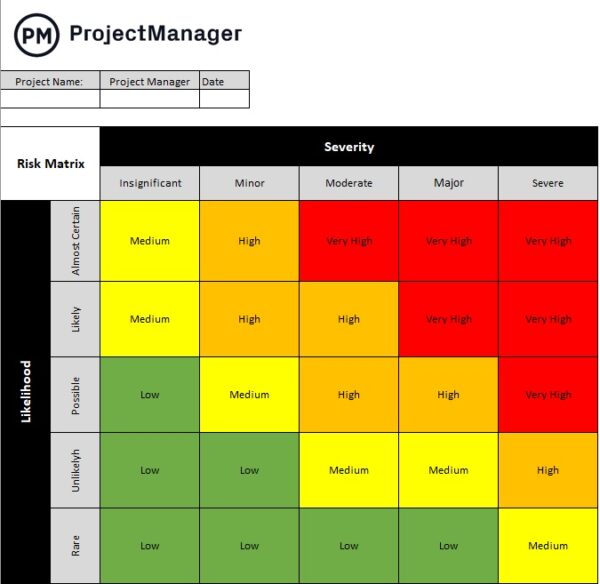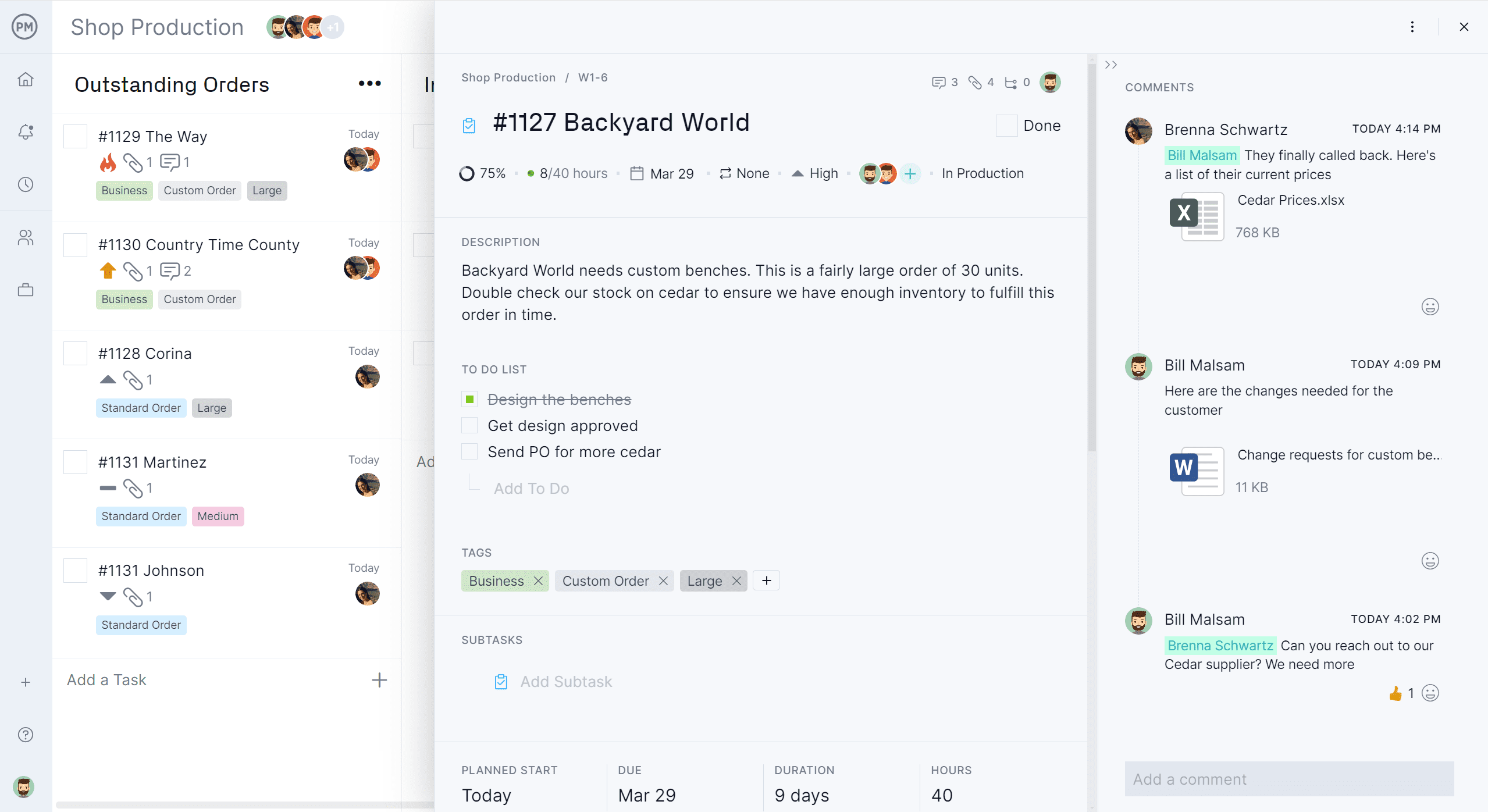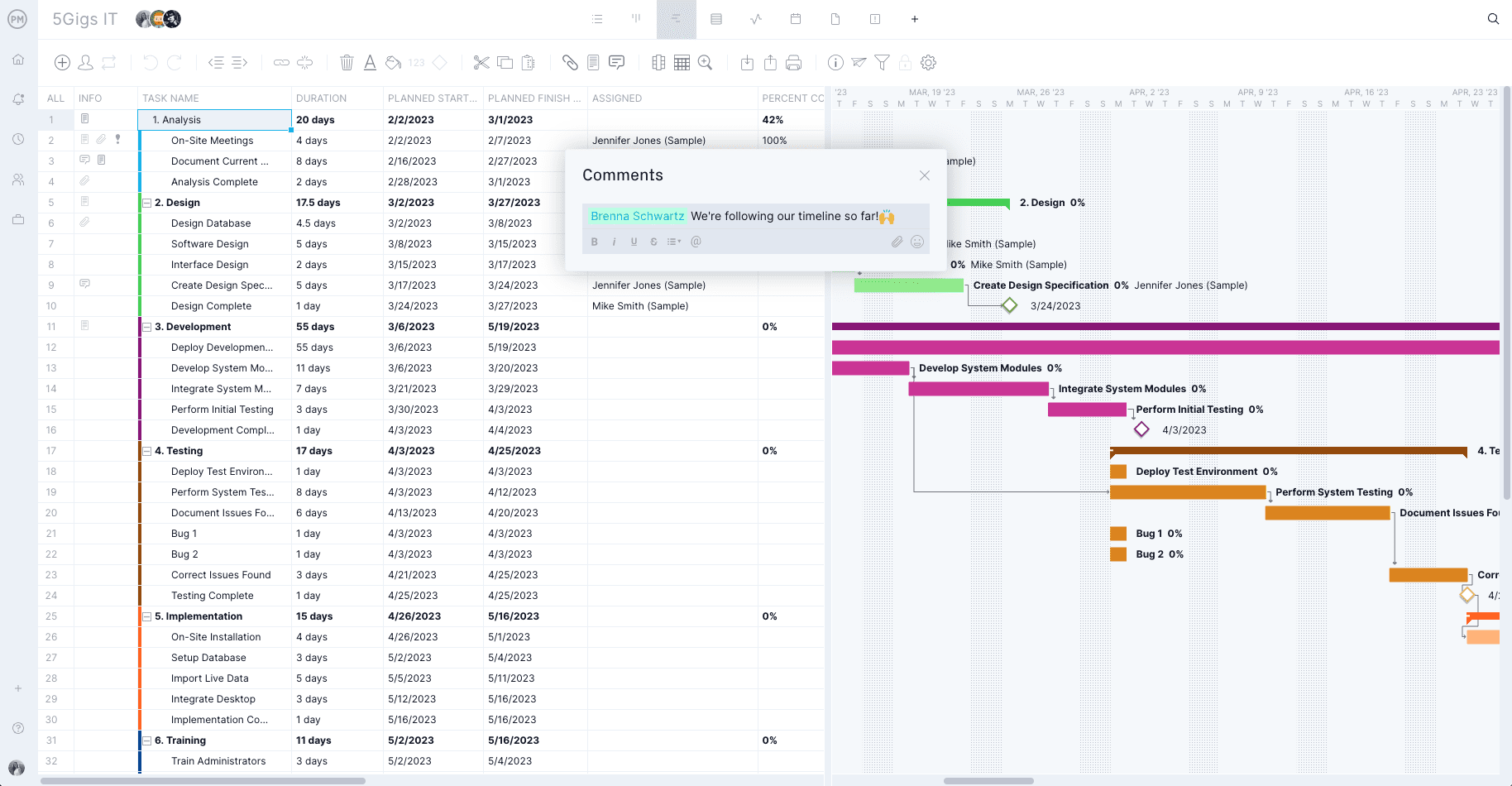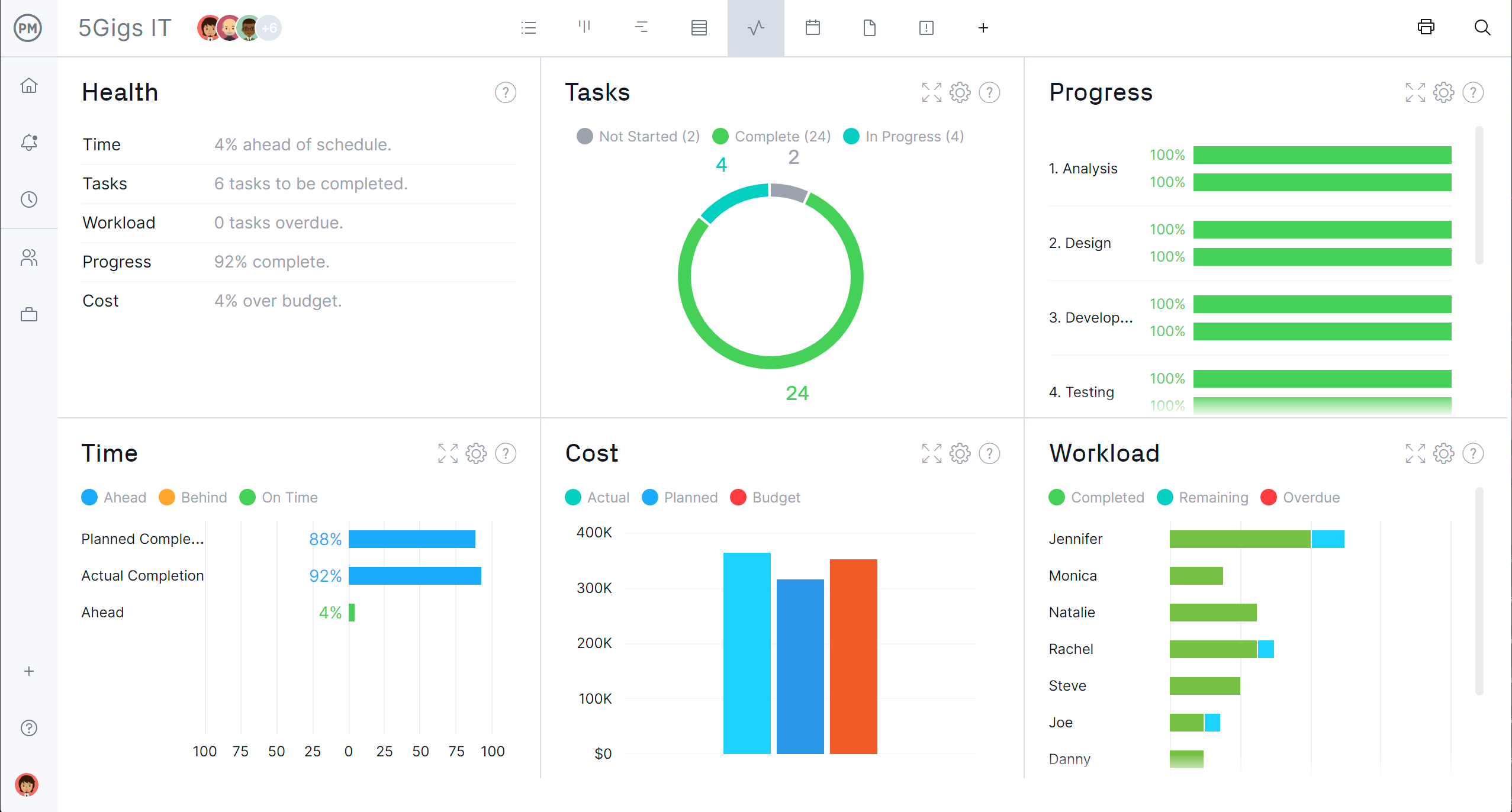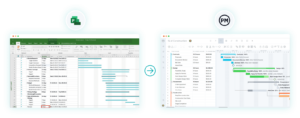All projects have risks, but not all risks are the same. Many potential risks can affect a project plan and you need to have a risk management process in place to manage them.
This risk management process consists of risk identification, assessment, mitigation and monitoring. To assess the level of risk, use a risk matrix. Creating a risk assessment matrix gives you a tool to perform qualitative risk analysis and increases the quality of your decision-making.
What Is a Risk Matrix?
A risk matrix is a visual tool project managers use to assess a risk’s potential impact on their project. A risk matrix is a project management grid, with the probability of a risk represented on the left, and the severity of the risk represented on the top.
One important thing to note about this risk management tool is that because of its importance, it’s been given a wide variety of names over the years. A risk matrix may also be referred to as:
- Risk assessment matrix or risk assessment table
- Risk management matrix
- Risk control matrix
- Risk analysis matrix
- Risk rating matrix
- Probability and impact matrix
However, despite being called in all these different ways, the risk matrix chart should be the same. All this informs your risk management plan because you have prioritized the risks and created a framework to respond quickly. It also lets you create risk mitigation strategies to manage any impact from high probability, high impact risks.
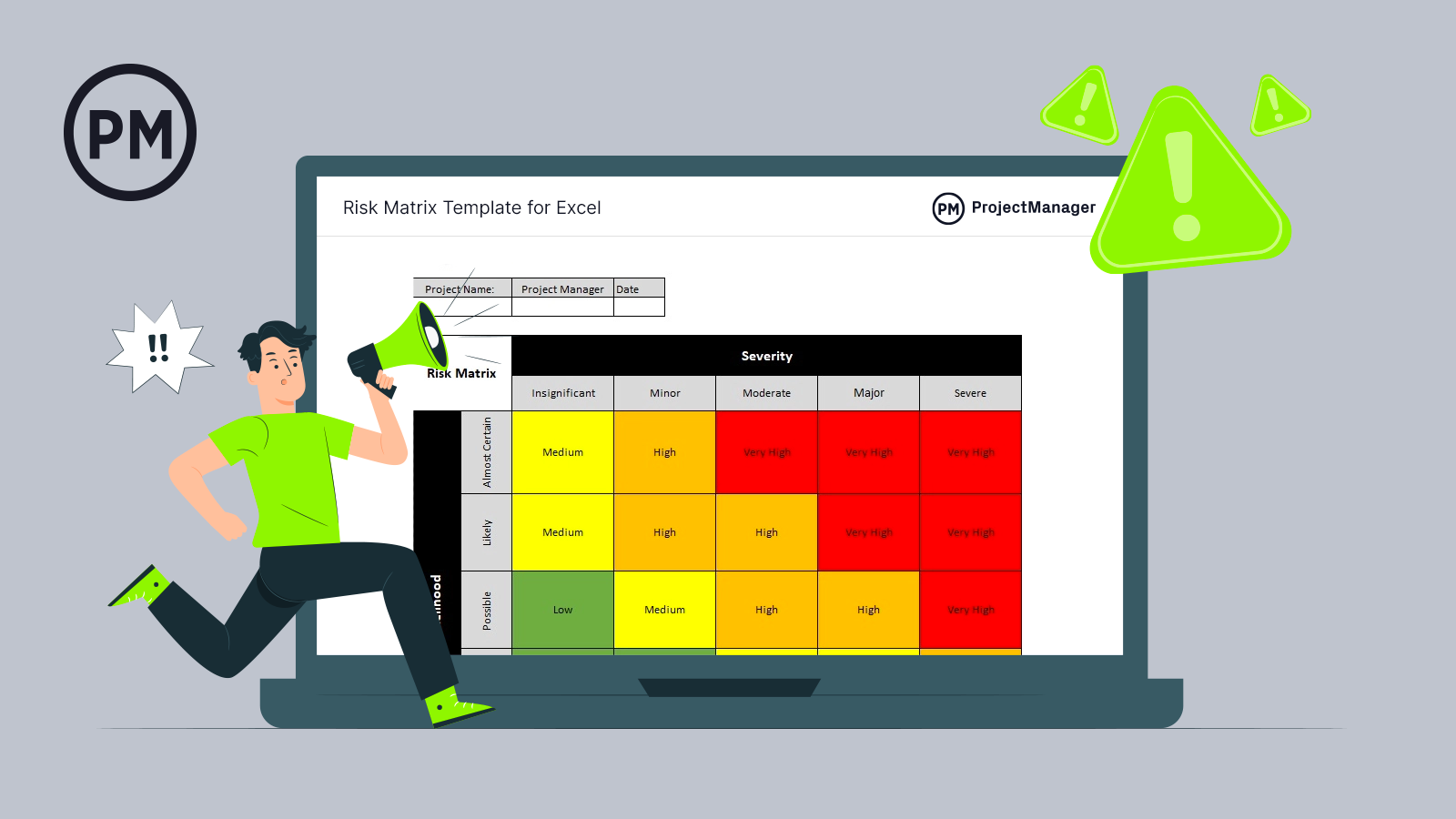
Get your free
Risk Matrix Template
Use this free Risk Matrix Template for Excel to manage your projects better.
Why Is It Important to Use a Risk Matrix?
Risk assessment is one of the most important steps in the risk management process because this is when you prioritize the project risks you’ve previously identified. A risk assessment matrix is a great tool to keep the focus on risks that are more likely to impact the time, cost and scope of your project. The risk matrix also gives you time in the planning phase to create risk mitigation plans for responding to risks that are more likely to happen.
Using a risk matrix to assess and prioritize risks is key to creating a risk mitigation strategy. If you’re using a risk assessment matrix, you can identify project risks and their severity faster. Live project tracking lets you view the evolving risk environment, letting you catch risks early and monitor your team’s progress in mitigating them.
When to Make a Risk Matrix
A risk matrix is created during the project planning phase when preparing a risk management plan. It’s done after the risk identification phase, which is the first step when managing risks typically consisting of making a risk register.
Once all potential project risks have been identified, it’s time for the next phase: risk assessment. This is where all the project risks are evaluated by severity and likelihood and prioritized accordingly in the risk management plan.
Types of Risk Matrix
There are many different types of risk matrices. Each of them serves a different purpose and context in risk management. Here are a couple of types of risk matrices.
3×3 Risk Matrix
Also called a basic risk matrix, the 3×3 risk matrix is called that because it’s made of a 3×3 grid that categorizes risks based on the likelihood or probability and impact or consequence. It’s for simple projects where a quick overview of risk levels is needed.
5×5 Risk Matrix
The 5×5 risk matrix is structured as a 5×5 grid. There are five levels each for likelihood and impact, such as rare, unlikely, possible, likely and almost certain. This provides a more nuanced view of risk, making it suitable for larger or more complex projects.
How to Create a Risk Matrix
Follow these four steps, and remember to constantly review and revise your risk assessment matrix throughout the project life cycle:
- Identify Risks: Start by looking at the entire risk landscape. That is, view the whole project and discuss things that could potentially impact the project with your team. Don’t be afraid to seek out historical data from previous projects, as well. Break down the identified risks into four categories: strategic, operational, financial and external.
- Set Risk Criteria: Once you identify risks, the next step is to determine their probability and their impact, assigning values to those variables. Risk criteria let you place the risk on the risk assessment matrix. Spend time on each decision, and get feedback from your team to make sure your placement is accurate.
- Assess Risk: Next, analyze the risk according to your risk criteria. This is a three-tier assessment; high, medium or low. The more detail, the better the analysis of the risks to your project.
- Prioritize Risk: Now that you have this data, prioritize the risks that are most dangerous to the success of the project. This is also the first step in developing a risk assessment plan and figuring out what to do if these risks occur.
Risk Matrix Example
To better understand how a risk matrix is used, let’s imagine a real-life risk matrix example. In this case, Acme Construction has a project to build a new office building in an urban area. The team has used a 5×5 risk matrix to identify various risks that could impact this construction project.
The risks that were identified include weather delays, labor shortages, regulatory compliance issues, budget overruns and supply chain disruptions. Let’s look at each of these risks and rate them.
In terms of weather delays, the risk matrix says it’s likely, the impact is major and the risk level is high. For labor shortages, the likelihood is possible, the impact would be major and this, too, is a high risk level. Regulatory compliance issues are unlikely, but the impact would be critical and, therefore, is a maximum risk. Budget overruns are possible, the impact would be major and the risk level is high. Finally, supply chain disruptions could be possible, with a moderate impact and a medium risk.
By using the 5×5 risk matrix, Acme Construction can visualize and prioritize the risks associated with the project. This allows the project team to focus on high-priority risks, allocate resources efficiently and develop a comprehensive risk mitigation strategy. All of this improves the chances of the project being successfully delivered on time and the company keeping its profit margin.
Risk Matrix Template
We’ve created a risk assessment matrix template for Excel to help you get started with the risk analysis process. Simply download the file and start prioritizing your project risks in minutes.
Using a Risk Matrix for Qualitative Risk Analysis
A risk assessment matrix works well with qualitative risk analysis, which is a risk management technique to prioritize risk. In fact, qualitative risk analysis is what a risk matrix visualizes!
Qualitative risk analysis provides a structure to use your risk matrix. For example, it helps you assemble a team to identify risks. Then, have the team document every risk they identify. It doesn’t matter how small or insignificant the risk might appear. It’s best to cast a wide net at this point in the risk management process. You can reevaluate later as you analyze and determine how impactful each risk could be.
Next, rate and prioritize each risk based on the likelihood it might happen. Prioritize the risk however you want, but remember—the larger the range, the more accurate the risk assessment. Now you can develop strategies to address risks if they do occur.
A risk matrix is just a visual representation of a qualitative risk analysis. Use qualitative risk analysis to fill out your risk assessment matrix and make your findings more helpful.
Once you’ve made a risk assessment, ProjectManager helps you plan and track it in real time. You can create a risk card, which resembles our task cards, to assign the risk, prioritize it and even add a matrix widget to assess the risk level against the likelihood and impact. That gives you the risk level at a glance, allowing you to quickly resolve issues that arise. Get started with ProjectManager today for free.
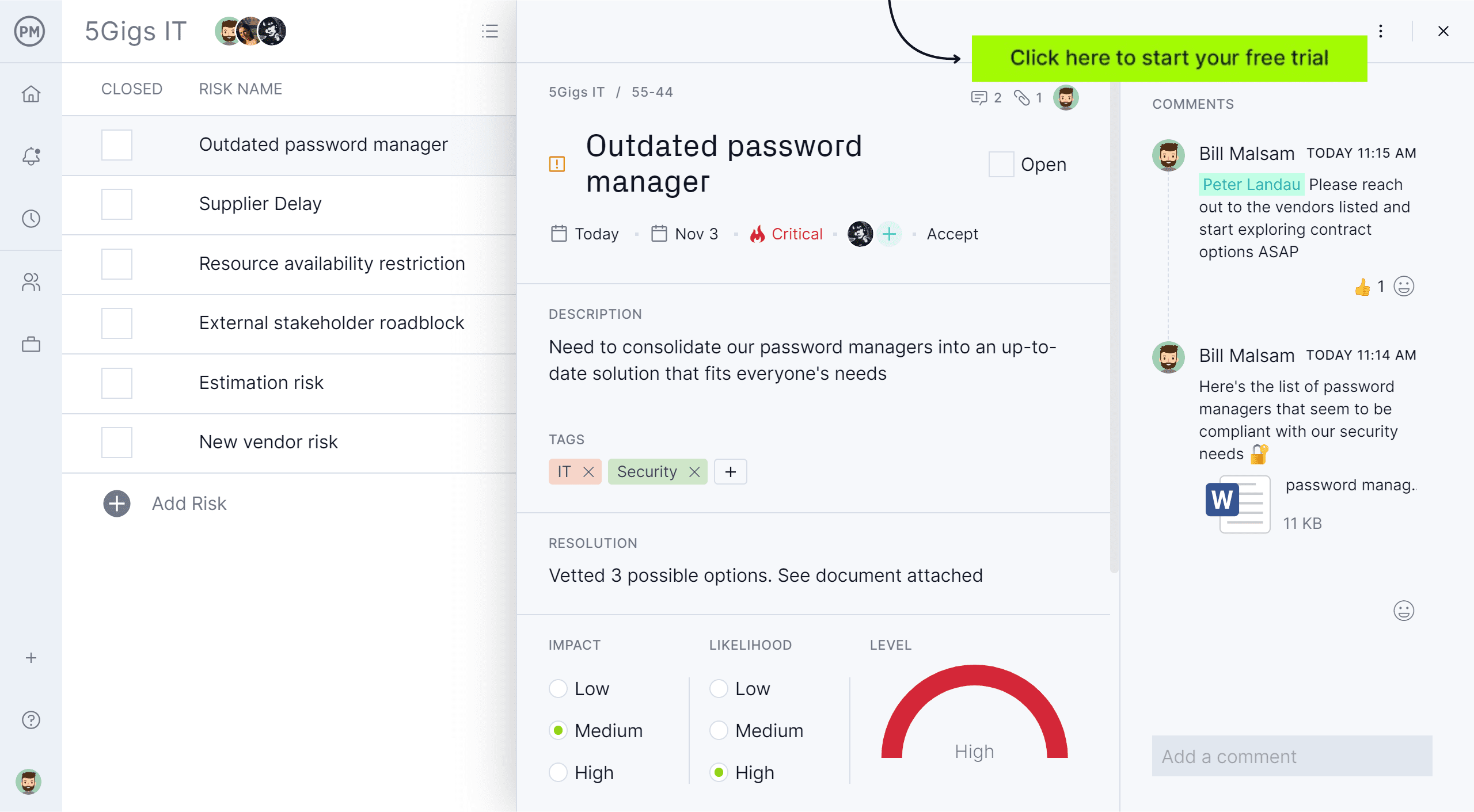
How ProjectManager Helps with Risk Management
ProjectManager is online project management software, which means it delivers real-time data to help you identify risk quickly when it appears in your project. The quicker you identify risk, the faster you can resolve it before it becomes a problem.
Track Risk in Multiple Project Views
The risk assessment matrix prepares you for risk, and ProjectManager gives you the tools to address it. You can gather, prioritize and assign risks using the Gantt chart view, and track them on a task list, calendar or kanban board. Project data is updated across the software, so no matter which project view you’re working on, the information is current.
Collaborate in Real-Time with Your Team
Teams are often distributed, which is why ProjectManager offers collaboration features. Once an issue is worked on, team members can comment at the task level as they resolve it. Remote can work together with teams in the office. Automated notifications alert you whenever a task’s status updates to keep things moving forward quickly.
Track Risks on Intuitive Dashboards
To track progress, use our live dashboard. Data is collected and automatically calculated to display in easy-to-read charts and graphs that capture risks when they first appear. Unlike other software, ProjectManager is already set up and ready to give you instant status reports when you need them.
ProjectManager is award-winning software that helps you plan, monitor and report on risk. Our resource management tools make it simple to allocate resources and respond to issues so they’re resolved before they become problems. Get real-time data to capture risks quickly and make more insightful decisions when working to resolve them. Try ProjectManager free today.
The post Using a Risk Matrix (Template Included) appeared first on ProjectManager.

